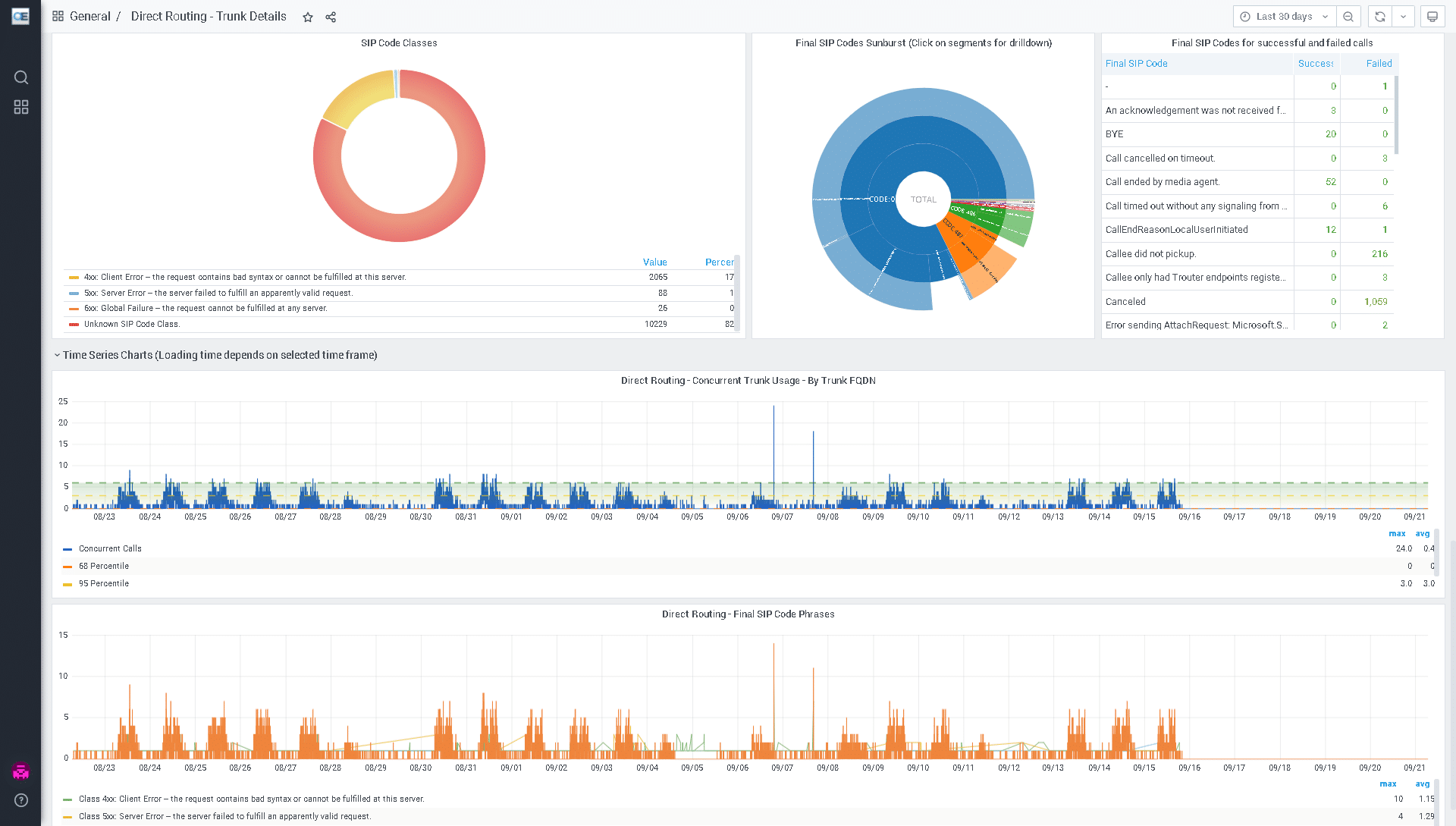There are two ways to make the connection and optimize PSTN routing for better Microsoft Teams call quality:
- Purchase a Calling Plan from Microsoft, which allows organizations to essentially buy credits from Microsoft to make calls via Teams to the outside telecom backbone through a connection managed by Microsoft.
- Setup Direct Routing through PSTN Gateways that you control, also called Session Border Controllers (SBCs), which are usually on-premises or hosted third-party appliances.
The most popular of these two options is Direct Routing. Metrigy’s recently published study on Workplace Collaboration: 2021-22 reviewed 476 organizations and found that more than 70% of those adopting Microsoft Teams Phone System are using Direct Routing to connect Teams to the PSTN backbone. However, using direct routing between Teams and multiple SBCs can be complex to load balance for enterprise organizations which makes troubleshooting even harder.
Full-Visibility Monitoring and Reporting for PSTN Call Integration
Linking your Teams calling with external Telecom providers through SBC gateways produces both benefits and challenges. One common challenge that enterprise support and operations teams face is having visibility into the telephony-related performance, quality, and availability issues. And Microsoft makes it very clear that the responsibility for the end-user experience remains with the enterprise organization, including the networks, gateways, and endpoints.
So, how can you effectively monitor and measure the true end-user experience for Teams voice performance for PSTN calling? To successfully track and troubleshoot the performance issues for Teams call quality you need to see the complete picture; and see it in detail with all the color and imperfections. Understand there are three different sections, or integration zones, of call traffic between these platforms. Each of these require detailed monitoring and analysis to identify chokepoints causing call quality issues. They include the following:
- Teams call routing to and from the SBC Gateways
- Call transfer and conversion processing for traffic at each SBC
- Handoffs to SIP trunk lines at each SBC, including success and error codes
Single-Pane-of-Glass for FAST Troubleshooting
Being able to monitor and track the entire journey for the Direct Routing of PSTN voice traffic requires visibility from the user endpoint perspective and at the gateways. There are many factors at play during the end-to-end journey, and unless you are measuring throughput from each user endpoint and SBC, you just don’t know what the cause for the bottlenecks may be. A user may have their calls routed through an SBC thousands of miles away. They may be routing through a nearby SBC that is overloaded during peak business hours. Or as happens many times, the SIP trunk lines cannot handle the call load at that specific gateway, causing multiple error codes and dropped calls.
Only when you have an integrated monitoring toolset that links the client-side information and device metrics to the performance analytics of the network segments and SBC gateways do you have a full understanding of performance for Teams enterprise voice. And having all that information inside a single interface makes it much easier for IT support teams to do analysis and troubleshooting quickly.
OfficeExpert EPM gathers all that telemetry data, combines it with the Teams call performance classifications from Microsoft CQD, and organizes it into actionable intelligence using dashboards, graphical reports, and drill-down views. By leveraging real-time and historic data about Teams call quality performance at global, local, and individual levels an organization can pinpoint, resolve, and often prevent disruptions to communications that affect productivity and stall business collaboration. The main areas where OfficeExpert EPM assists IT support and operations teams with their Direct Routing for PSTN integration include the following:
- Identify SBCs that are overloaded during peak usage times and require upgrades
- Spotlight overloaded SIP trunk lines at gateways
- Optimize routing and load balancing for environments with multiple SBCs
- Ensure compliance with Toll Bypass regulations
Find Out More…
If you would like to take a more proactive approach to monitoring and troubleshooting your Teams enterprise voice call quality levels and optimize PSTN routing, then you need to see the complete picture. To learn more about our OfficeExpert EPM data analytics solution and how it can help you optimize your Teams enterprise voice deployment, please visit our overview page online, or sign-up for a trial at https://www.panagenda.com/officeexpert/



